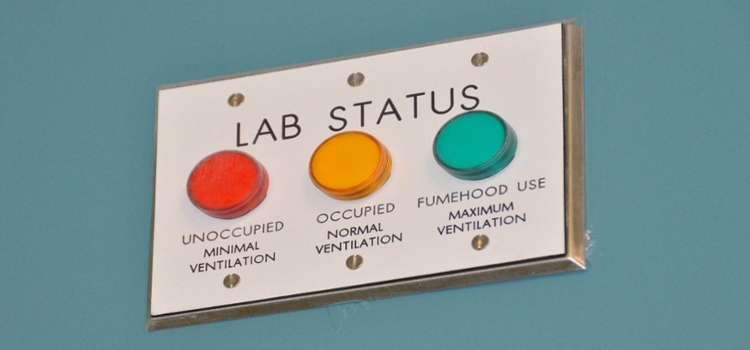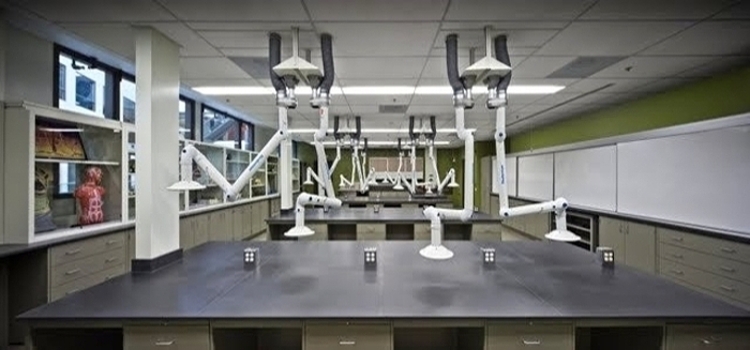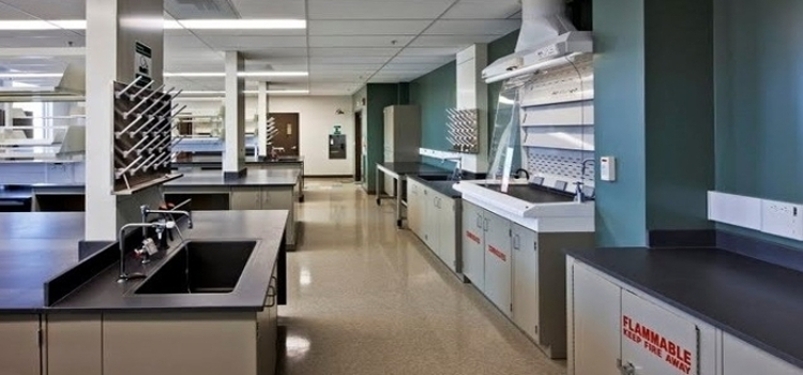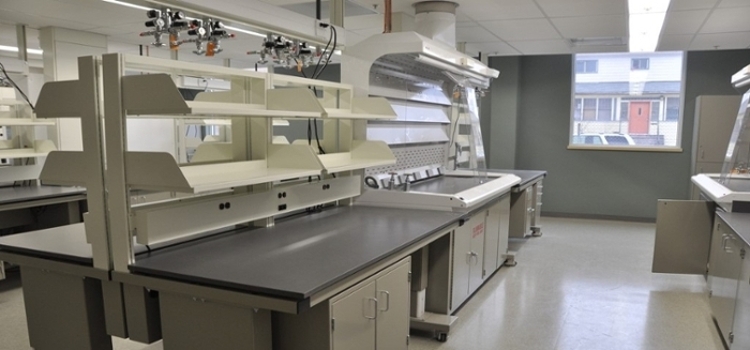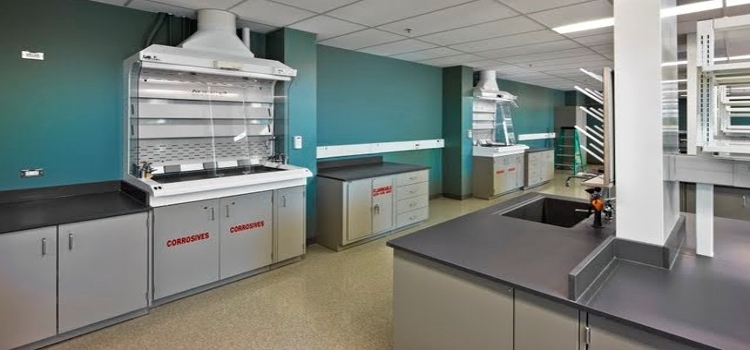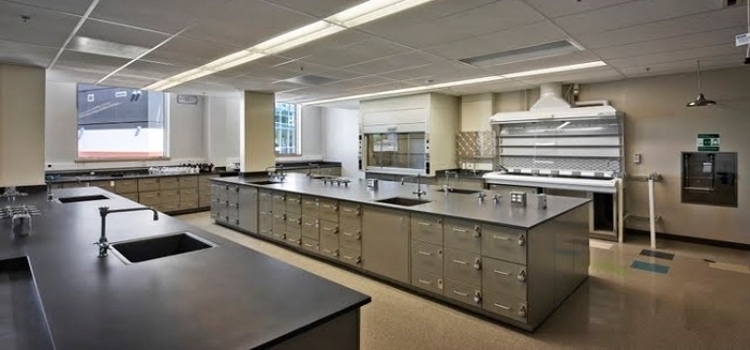Chemistry Labs
RED-YELLOW-GREEN LIGHT Lab Occupancy Control
The building utilizes an innovative and industry leading lab ventilation strategy that will enable over 60% reduction in energy costs while providing a safe work environment. The principles for the system were to implement industry best practice lab operating procedures that are appropriate for the work being conducted as opposed to operating systems for worst-case scenarios. During unoccupied mode (Red Light Mode) all chemicals will be safely stored away so that minimum airflows can be reduced from 4 ACPH to 1 ACPH. During occupied modes the labs will be operated in two modes. Yellow Light Mode for teaching and when no hazardous chemicals are being used in the lab at 4 to 6 ACPH as opposed to 8 to 10 ACPH. In full lab mode (Green Light Mode) labs will be operated at 6 to 8 ACPH as opposed to 8 to 10 ACPH based upon using cross bench flow ventilation to improve ventilation effectiveness. An emergency purge system can be activated in case of an accident.
Laboratory Buildings consume five times more energy than a commercial office building mainly due to the large amount of ventilation that is required to purge lab spaces. The design usually allows for worst-case scenarios of 4 air changes per hour (ACPH) during unoccupied modes and 8 to 10 ACPH during occupied periods. The UWinnipeg design team in collaboration with the College of Environment implemented “Best Practice Laboratory Design” to achieve a facility that performs at a minimum 60% reduction in energy use.

